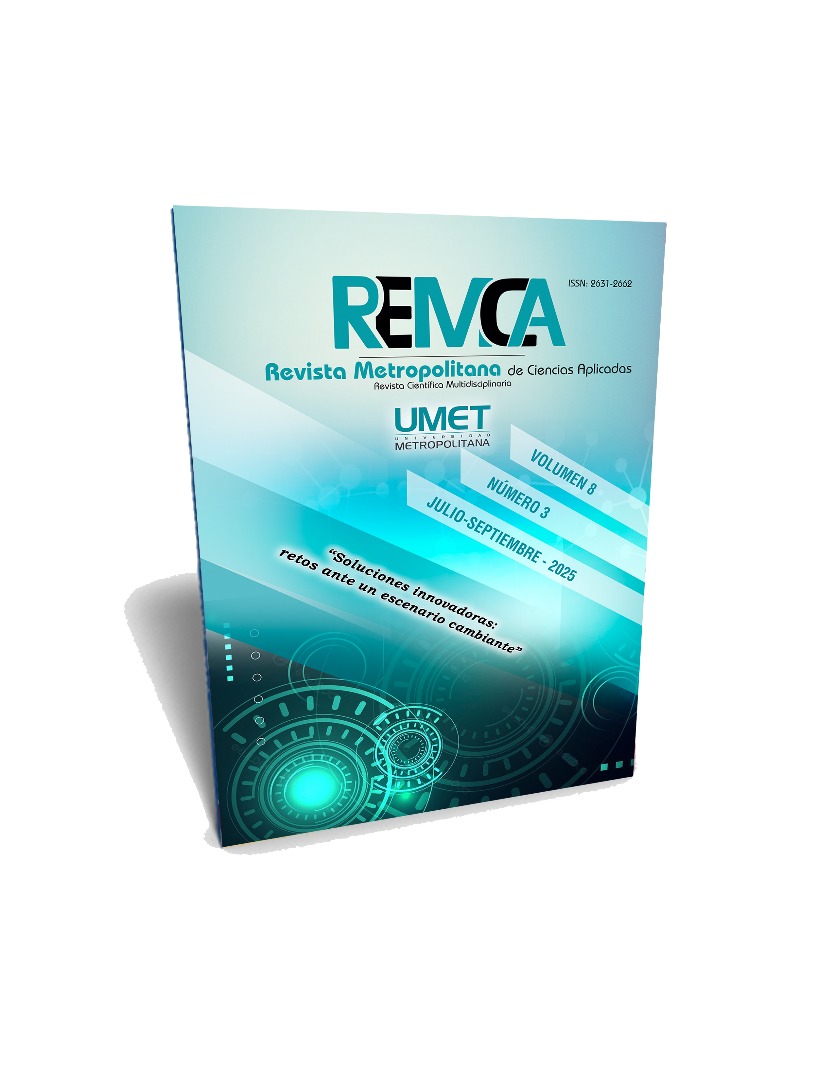Prevalence of porcine cysticercosis in the municipal slaughterhouse of Pelileo canton, 2023
DOI:
https://doi.org/10.62452/c5d09b79Keywords:
Porcine cysticercosis, prevalence, affected organs, Taenia soliumAbstract
Porcine cysticercosis, a parasitic zoonosis caused by the larva of Taenia solium, represents a significant public health and economic problem in regions where pig farming is common. This study was conducted at the Municipal Slaughterhouse of Pelileo canton, in the city of Ambato, Ecuador, during 2023, with the aim of determining the prevalence of cysticercosis in slaughtered pigs, identifying the affected organs, and evaluating the causes of condemnation for human consumption. A descriptive and quantitative study was carried out, analyzing information from pigs originating from various areas of the country. During slaughter, visual inspections and palpations of main organs such as the heart, tongue, liver, and masseter muscles were performed to detect T. solium cysts. The collected data was recorded and analyzed using Microsoft Excel 365. The results showed a prevalence of 0.31% of cysticercosis in pigs slaughtered during 2023. The most affected organs were the liver, lungs, and heart, with a prevalence of 0.95% among condemned organs. Although the prevalence of porcine cysticercosis in the Pelileo slaughterhouse is relatively low, the disease remains a frequent finding. It is recommended to implement stricter control and prevention measures in artisanal pig productions, as well as education programs, health surveillance, deworming, and awareness to reduce the incidence of this zoonosis.
Downloads
References
Arteaga Bonilla, R., & Arteaga Michel, R. (2003). Diagnóstico, tratamiento y control de la cisticercosis por Taenia solium. Revista de la Sociedad Boliviana de Pediatría, 42(3), 189-190. http://www.scielo.org.bo/scielo.php?script=sci_arttext&pid=S1024-06752003000300011&lng=es.
Bouteille, B. (2014). Épidémiologie de la cysticercose et de la neurocysticercose [Epidemiology of cysticercosis and neurocysticercosis]. Medecine et sante tropicales, 24(4), 367–374. https://doi.org/10.1684/mst.2014.0378
Brandt, J. R., Geerts, S., De Deken, R., Kumar, V., Ceulemans, F., Brijs, L., & Falla, N. (1992). A monoclonal antibody-based ELISA for the detection of circulating excretory-secretory antigens in Taenia saginata cysticercosis. International journal for parasitology, 22(4), 471–477. https://doi.org/10.1016/0020-7519(92)90148-e
Butala, C., Brook, T. M., Majekodunmi, A. O., & Welburn, S. C. (2021). Neurocysticercosis: current perspectives on diagnosis and management. Frontiers in Veterinary Science, 8. https://doi.org/10.3389/fvets.2021.615703
Dixon, M. A., Winskill, P., Harrison, W. E., & Basáñez, M. G. (2021). Taenia solium taeniasis/cysticercosis: from parasite biology and immunology to diagnosis and control. Advances in Parasitology, 112, 133-217. https://doi.org/10.1016/bs.apar.2021.03.003
Dorny, P., Phiri, I. K., Vercruysse, J., Gabriel, S., Willingham, A. L., Brandt, J., Victor, B., Speybroeck, N., & Berkvens, D. (2004). A Bayesian approach for estimating values for prevalence and diagnostic test characteristics of porcine cysticercosis. International Journal for parasitology, 34(5), 569–576. https://pubmed.ncbi.nlm.nih.gov/15064121/
Krecek, R. C., Michael, L. M., Schantz, P. M., Ntanjana, L., Smith, M. F., Dorny, P., Harrison, L. J., Grimm, F., Praet, N., & Willingham, A. L. (2008). Prevalence of Taenia solium cysticercosis in swine from a community-based study in 21 villages of the Eastern Cape Province, South Africa. Veterinary parasitology, 154(1-2), 38–47. https://doi.org/10.1016/j.vetpar.2008.03.005
Labrada Ching, J., Villamarín Barragán, D. R., Jiménez Villa, M. A., & Castaño Trujillo, L. S. (2024). Protozoarios gastrointestinales zoonóticos del cerdo. Revisión bibliográfica. Salud, Ciencia y Tecnología, (4). https://revista.saludcyt.ar/ojs/index.php/sct/article/view/938
Murillo-Zavala, A., Zavala-Hoppe, A., Ponce-Parrales, J., & Solorzano-Alvarez, N. (2021). Epidemiología y diagnóstico en Latinoamérica de Taenia Solium. Polo del Conocimiento, 6(3), 2617-2646. doi:https://doi.org/10.23857/pc.v6i3.2707
Pfuetzenreiter, M., & Pires, F. (2000). Epidemiologia da teníase/cisticercose por Taenia solium e Taenia saginata. Ciência Rural, 30, 541-548. https://doi.org/10.1590/S0103-84782000000300030
Rodríguez-Hidalgo, R. (2007) La cisticercosis porcina en América Latina y en el Ecuador. Porcine. REDVET. Revista electrónica de Veterinaria, 7(11). https://www.redalyc.org/articulo.oa?id=63681102
Downloads
Published
Issue
Section
License
Copyright (c) 2025 Jaine Labrada-Ching, Pamela Alejandra Paredes-Carvajal, Ligia Ivette Valle-Ortiz, Gissela Alexandra Zumba-Sarmiento (Autor/a)

This work is licensed under a Creative Commons Attribution-NonCommercial-ShareAlike 4.0 International License.
Authors who publish in Revista Metropolitana de Ciencias Aplicadas (REMCA), agree to the following terms:
1. Copyright
Authors retain unrestricted copyright to their work. Authors grant the journal the right of first publication. To this end, they assign the journal non-exclusive exploitation rights (reproduction, distribution, public communication, and transformation). Authors may enter into additional agreements for the non-exclusive distribution of the version of the work published in the journal, provided that acknowledgment of its initial publication in this journal is given.
© The authors.
2. License
The articles are published in the journal under the Creative Commons Attribution-NonCommercial-ShareAlike 4.0 International License (CC BY-NC-SA 4.0). The terms can be found at: https://creativecommons.org/licenses/by-nc-sa/4.0/deed.en
This license allows:
- Sharing: Copying and redistributing the material in any medium or format.
- Adapting: Remixing, transforming, and building upon the material.
Under the following terms:
- Attribution: You must give appropriate credit, provide a link to the license, and indicate if any changes were made. You may do this in any reasonable manner, but not in any way that suggests the licensor endorses or sponsors your use.
- NonCommercial: You may not use the material for commercial purposes.
- ShareAlike: If you remix, transform, or build upon the material, you must distribute your creation under the same license as the original work.
There are no additional restrictions. You may not apply legal terms or technological measures that legally restrict others from doing anything the license permits.




